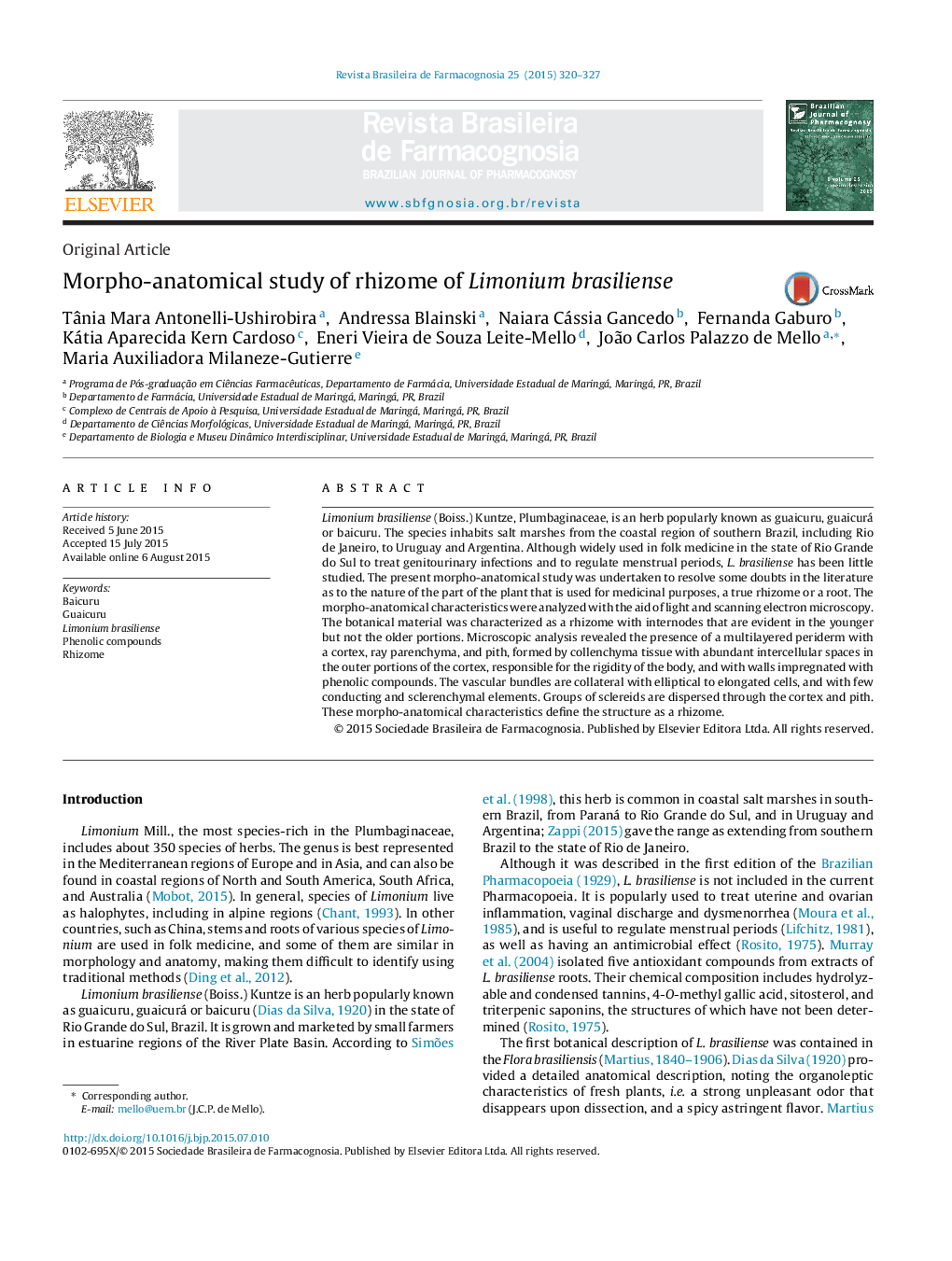| کد مقاله | کد نشریه | سال انتشار | مقاله انگلیسی | نسخه تمام متن |
|---|---|---|---|---|
| 2577691 | 1129957 | 2015 | 8 صفحه PDF | دانلود رایگان |

Limonium brasiliense (Boiss.) Kuntze, Plumbaginaceae, is an herb popularly known as guaicuru, guaicurá or baicuru. The species inhabits salt marshes from the coastal region of southern Brazil, including Rio de Janeiro, to Uruguay and Argentina. Although widely used in folk medicine in the state of Rio Grande do Sul to treat genitourinary infections and to regulate menstrual periods, L. brasiliense has been little studied. The present morpho-anatomical study was undertaken to resolve some doubts in the literature as to the nature of the part of the plant that is used for medicinal purposes, a true rhizome or a root. The morpho-anatomical characteristics were analyzed with the aid of light and scanning electron microscopy. The botanical material was characterized as a rhizome with internodes that are evident in the younger but not the older portions. Microscopic analysis revealed the presence of a multilayered periderm with a cortex, ray parenchyma, and pith, formed by collenchyma tissue with abundant intercellular spaces in the outer portions of the cortex, responsible for the rigidity of the body, and with walls impregnated with phenolic compounds. The vascular bundles are collateral with elliptical to elongated cells, and with few conducting and sclerenchymal elements. Groups of sclereids are dispersed through the cortex and pith. These morpho-anatomical characteristics define the structure as a rhizome.
Figure optionsDownload as PowerPoint slide
Journal: Revista Brasileira de Farmacognosia - Volume 25, Issue 4, July–August 2015, Pages 320–327